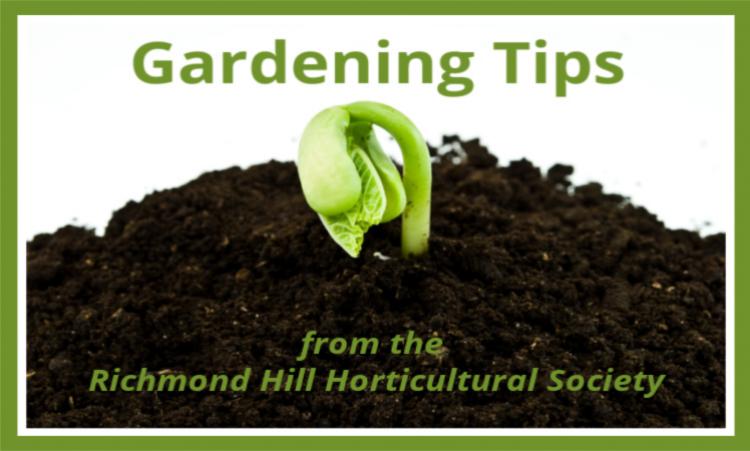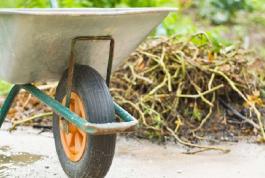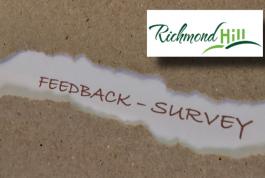Submitted by Doreen Coyne, a member of the Richmond Hill Garden & Horticultural Society
As we prep our gardens this spring, we also need to think about our soil and our lawns.
Below you’ll find ways to enrich your soil before you plant your veggies and flowers; as well as some quick tips for your lawn.
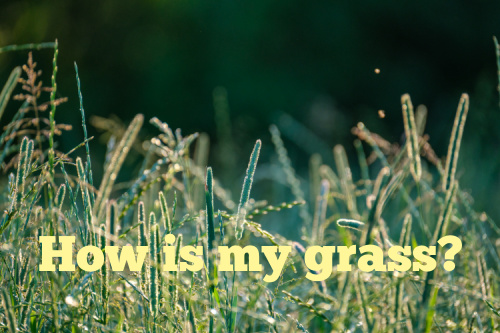
SOD: Recycle sod to repair winter-damaged spots on your lawn. Simply remove the damaged turf, aerate the soil, and press new soil into the empty place. Water the area well until it is established. In one tricky spot in my garden, I had a row of sod that never took and the area was a bit low compared to the surrounding area. So, in the spring, we took the dead sod and turned it upside down and added some topsoil and new sod on top. During the summer the dead sod started to decompose into humus-rich soil and the new sod is doing well and matches the level of the rest of the lawn!
I’ve already fertilized my lawn by spreading a very thin layer of worm compost over it. You can use another compost but I find the worm compost very good for both lawns and gardens. Next, I need to add a little weed killer in certain areas and overall I want to add some good topsoil in areas that are a bit “low” with some additional lawn seed mixed in.
BTW: We’ll talk about how and when to do grub control in another article! But while you plant, take note now if you see grubs.
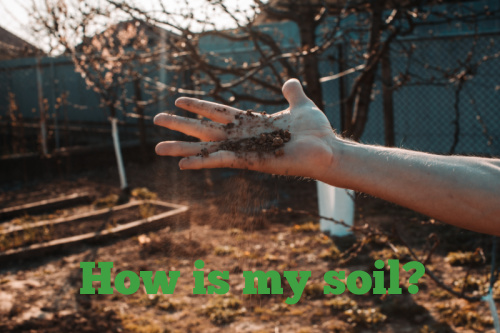
SOIL: To get the best soil let nature do what nature is supposed to do – compost dead leaves, garden waste (no weed seeds), and food waste – then do what you have to do to be a good steward to the soil – add the composted material and fertilizer as needed to your soil. Good soil should have these elements: oxygen, silicon, aluminum, iron, calcium, magnesium, potassium, and sodium. It should also have decreasing volumes of trace elements which are important. The texture of the soil is due to the size of the mineral particles in it.
SOIL TYPES:
There are a few main soil types:
- Heavy Clay soil: holds its shape when wet
- Sandy soil: does not hold its shape when wet and the drainage is fast sometimes too fast for plants to grab the nutrients they need
- Silty soil: powdery, doesn't crumble but it has lots of minerals in it
The proportion of sand, silt, and clay determines what kind of soil you have.
If there is too much clay, your soil will be dry, dense, and hard to work with. We seem to have a lot of that in Richmond Hill. In part that is due to builders who remove the thick layer of topsoil before they build new houses, then replace only a few inches of it when the build is complete. A great second revenue source as people are also looking for good topsoil to add to their soon-to-be lawns and gardens. Clay does have a good amount of nutrients. So, if you are like me and have a lot of clay just be prepared to add lots of compost, leaf mould, and manure to the surface for many years. This can work for lawns as well but of course, you can cover the lawn with new compost – perhaps a few millimetres each spring. With your efforts, the soil will slowly become more workable.
If there is so much sand in your soil that it drains faster than most plants can absorb it, then you’ll need to add compost to the surface of the soil. This will encourage earthworms who will then follow channels in the ground made by the roots of your plants and thus aerate the soil. The internal paths in the soil will also make it more moisture-retentive because the worms leave behind a slime that is produced by their bodies that helps all the little particles in the soil adhere to each other.
References:
Most of my techniques are based on what my Dad taught me decades ago.
Mark Cullen on Lawns and Gardens: http://markcullen.com/our-6-tips-to-the-perfect-lawn-and-garden/
I recall Robert Pavlis did a talk at our Horticultural Society in 2020 on Soil and Fertilizer that was welled received. You’ll find some videos by him if you Google: “Robert Pavlis on soil and fertilizer”

